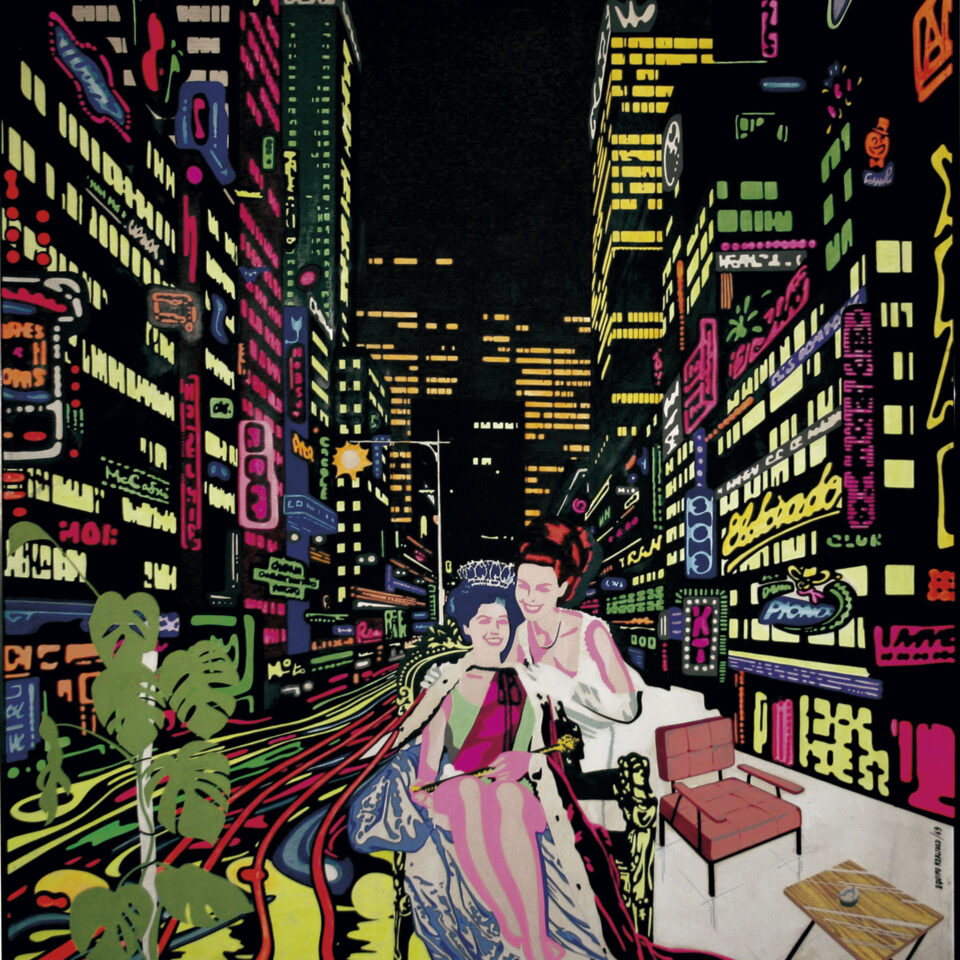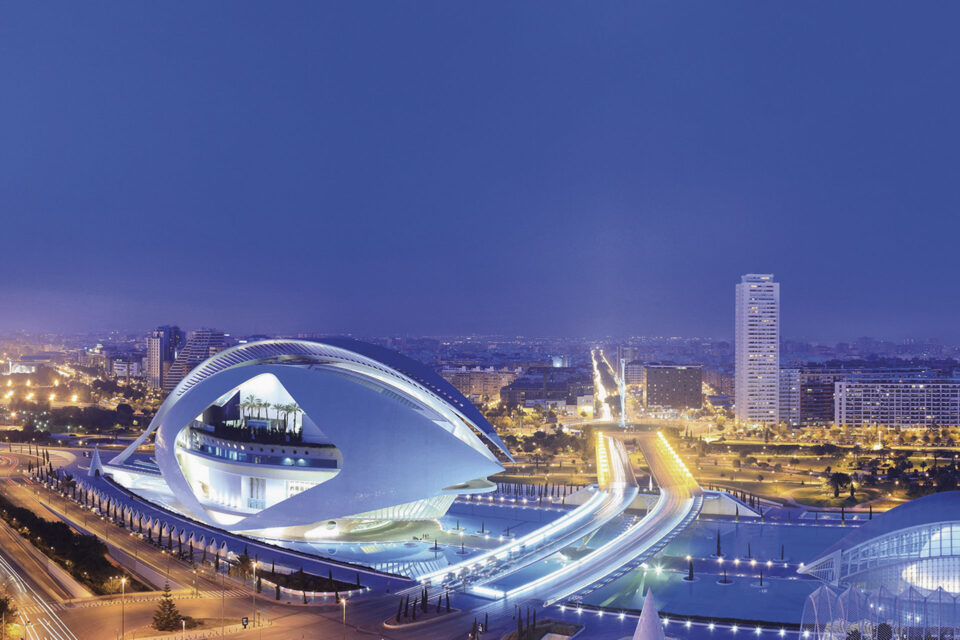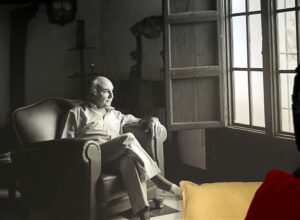New York has Andy Warhol as a reference, but Valencia also has its own pop artists collective in the 60 and 70s. The Valencian Pop Art marked a turning point in the Spanish modern art as they represented in their paintings all the social and political changes developed in Spain during the sixties and seventies, the last beats of the Franco regime and the beginning of the transition to democracy. Equipo Crónica and Equipo Realidad expressed the drive via art together with other artists such as Genovés, Anzo and, primarily, Ángela García Cordoñer and Isabel López. These last two provided their sarcastic feministic artworks, in a period where women were considered subservient in the Spanish patriarchal society. The series Misses by Ángela García fiercely criticises the objectification of women.

Mass media, publicity or comic are used with the intention of shaking consciences with a great narrative power, as the American pop art artists did. The group was created in Valencia in 1964, in a period of great unrest and confusion, when the collective awareness is misled and irritated, as it was shown in the general strikes of May 1968 or the Vietnam War. Its origins come from the artistic movement “Estampa Popular”, a chronicle created with the goal of raising social awareness from the collective. A pop rebellion against the neo-avantgardes of the age.
Equipo Crónica, as well as Estampa Popular, raised a counter-current speech. It developed a completely different style: rejecting abstract expressionism and informalism, definitely approaching towards Pop Art from 1970.
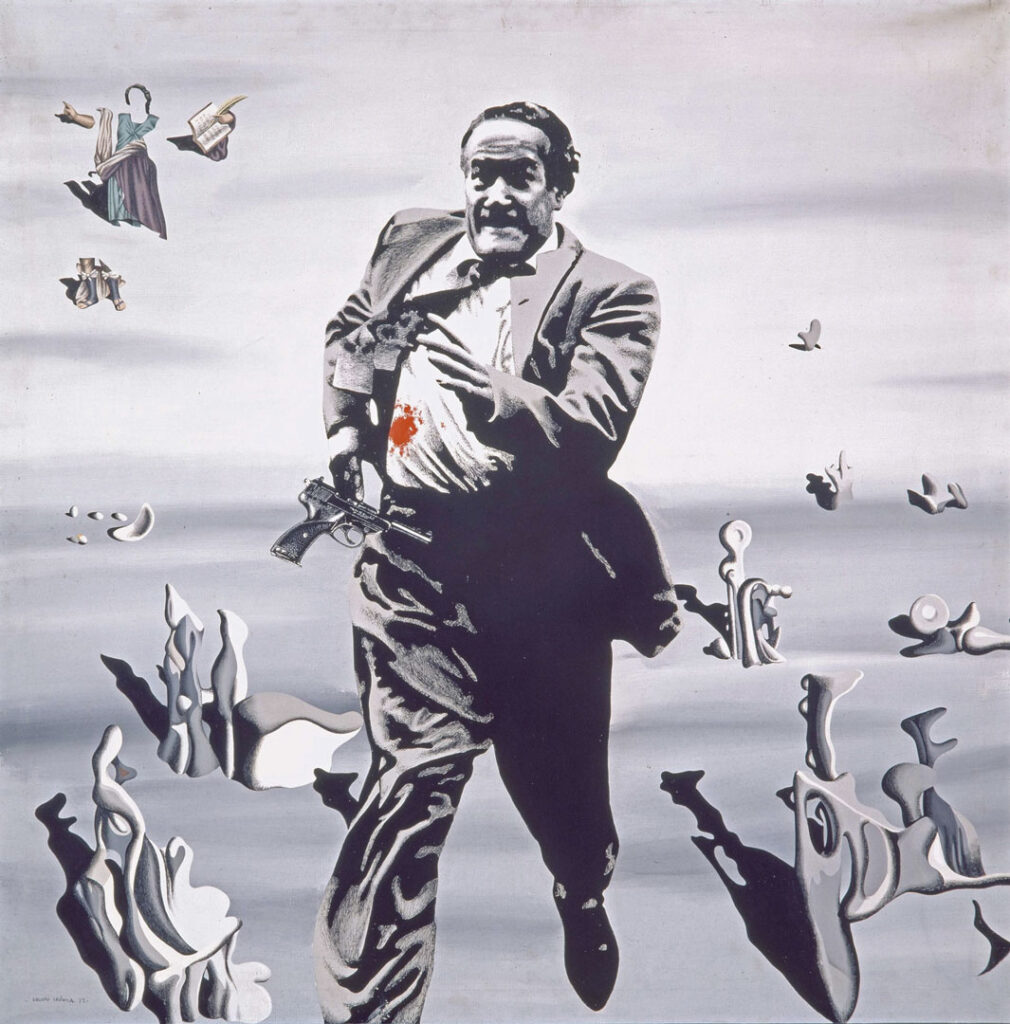
It was originally created by Manuel Valdés, Rafael Solbes and Joan Antoni Toledo, being the three of them from Valencia. However, the group is continued and established by the first two. It changes from an objectifying or even satiric position to provide ethical content. The point of view of the artist becomes of secondary importance and irony appears in front of the images. Solbes and Valdés worked as a team: they first reflected on their proposal and then painted together. Equipo Crónica had a critical nature, reporting or featuring about social and political reality. It worked as a denunciation of the reality of that time, the transmission of a message of social and political commitment hand in hand with artistic quality. Images of that current moment were used to make paintings, pictures, posters and collaged with the aim of reflecting about the pictorial language and its different genres. However, many of their themes were inspired by the Spanish classical painting with Velázquez, Picasso, Sorolla, Goya or El Greco as clear points of reference. Recognizable icons used to criticize the old political and social structures. Actually, they are the masters of collage, distortion and irony in order to get smiles through transgression. The series El Cartel is a homage to Josep Renau as it considers the poster as an art against the critics who consider it as a pamphlet. They experiment with the techniques of assemblage and glueing as in the series La partida de billar, or with the use of daily objects upgraded to the category of art making a combination of experimenting and technique.
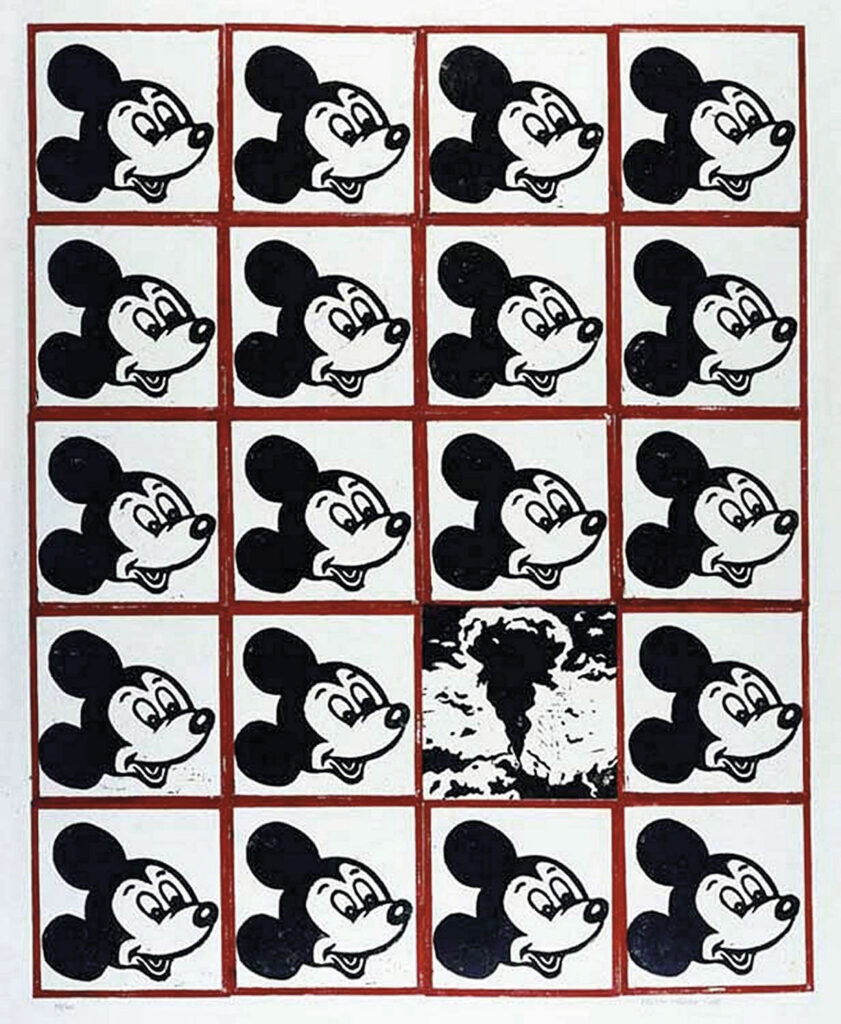
Equipo Crónica experimented with different techniques such as the use of images from the media with the aim of criticising individualism and the current system. For example, they use the image of Mickey Mouse in América, América! and Avionetas, two of their first works, as a symbol of the American consumer society. They make the same approach adopted by Warhol: the indefinite repetition of an image made public by the mass media but adding war images such as the atomic bomb, which is a metaphor of the progressive deterioration of the human condition with a clear anti-militarist meaning.
Sarcasm is present in every work by Equipo Crónica. In the set of drawings, pastel paintings, oil on canvas and cardboard named Serie paisajes urbanos, the city is represented as a set of alienation of humanity in our daily life. One of their most symbolic works about the Spanish society is Guernica 69, a series conceived as a false tale of the return of Picasso’s painting, representing scenes of its installation in a museum or the reception of the visit of authorities.
A few years after the group Equipo Crónica was created, the group known as Equipo Realidad let themselves be influenced by the Pop Art but making a more sarcastic interpretation of politics.
Rafa Solbes’ death in 1981 brought down Equipo Crónica, as Manuel Valdés states: “it’s over”. Valdés continues working and gets a prolific solo career, keeping away from the chronicle of reality and focusing on a much more esthetic work. He travels to New York in 1989, where he established his studio and experimented with different forms of expression. Alternating the place of creation between the two cities, he also set up a studio in Madrid, where he made big sculptures. Influenced by artists such as Velázquez, Rembrandt, Rubens y Matisse, Valdés creates huge works of art in which light and colours express a feeling of “tactility” thanks to the way of processing the materials. His six monumental sculptures don’t go unnoticed, six big heads inspired in the Spanish tradition in painting and in art history in general. They go perfectly well with every space that hosts this travelling exhibition.
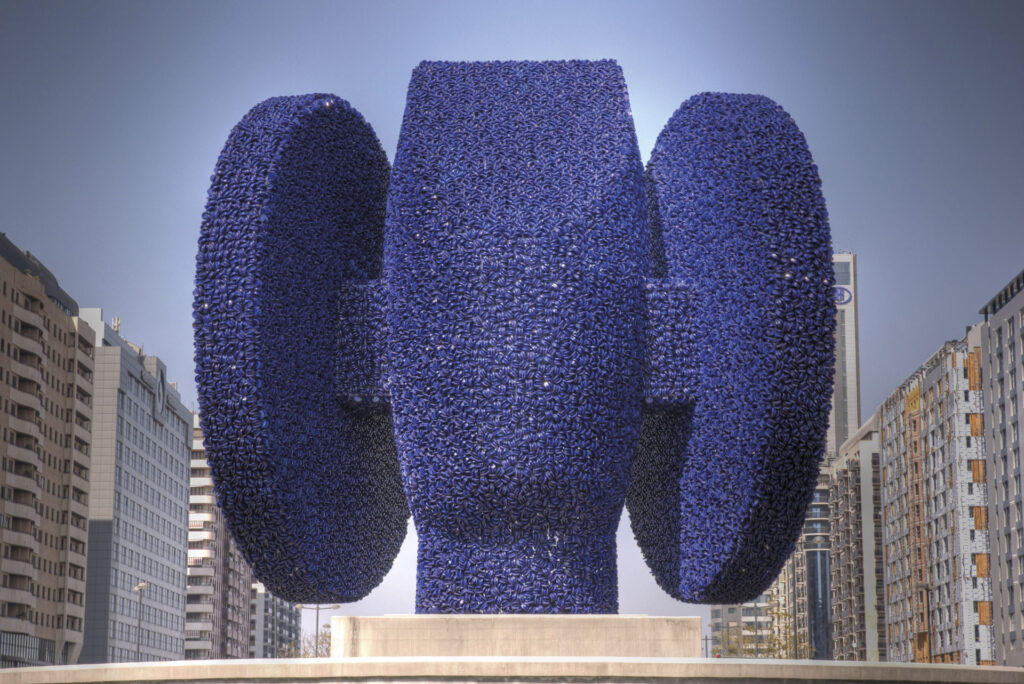
La Dama Ibérica was inaugurated in 2007 and it is the brightest sculptural work in the city of Valencia. Valdés gave it as a present to Valencia, a sculpture inspired in the limestone bust of La Dama de Elche, but it is 18 metres tall, intense cobalt blue and made up with 22.000 small pieces which replicate the artwork on a smaller scale. Mini-busts of 20 centimetres, made with stoneware, which have been manually set.
